At Öræfajökull’s southern slopes lies Stigárjökull, a small outlet glacier of only 4 km. The short distance from its top to the snout makes Stigárjökull a prime example of the influence of atmospheric patterns on glacier length.
Over a century ago Stígarjökull was much longer. Instead of terminating at seven hundred meters above sea level like nowadays, the glacier descended all the way to the plain just above sea level. Hardly anything reminds us of those days: no pictures and only sparse moraine fragments, as most of them are washed away by melt water from the Stígar valley. And to make matters even more complicated, the few moraines that are preserved are easily confused with mounds of frost-shattered scree (Harris et al., 2004).
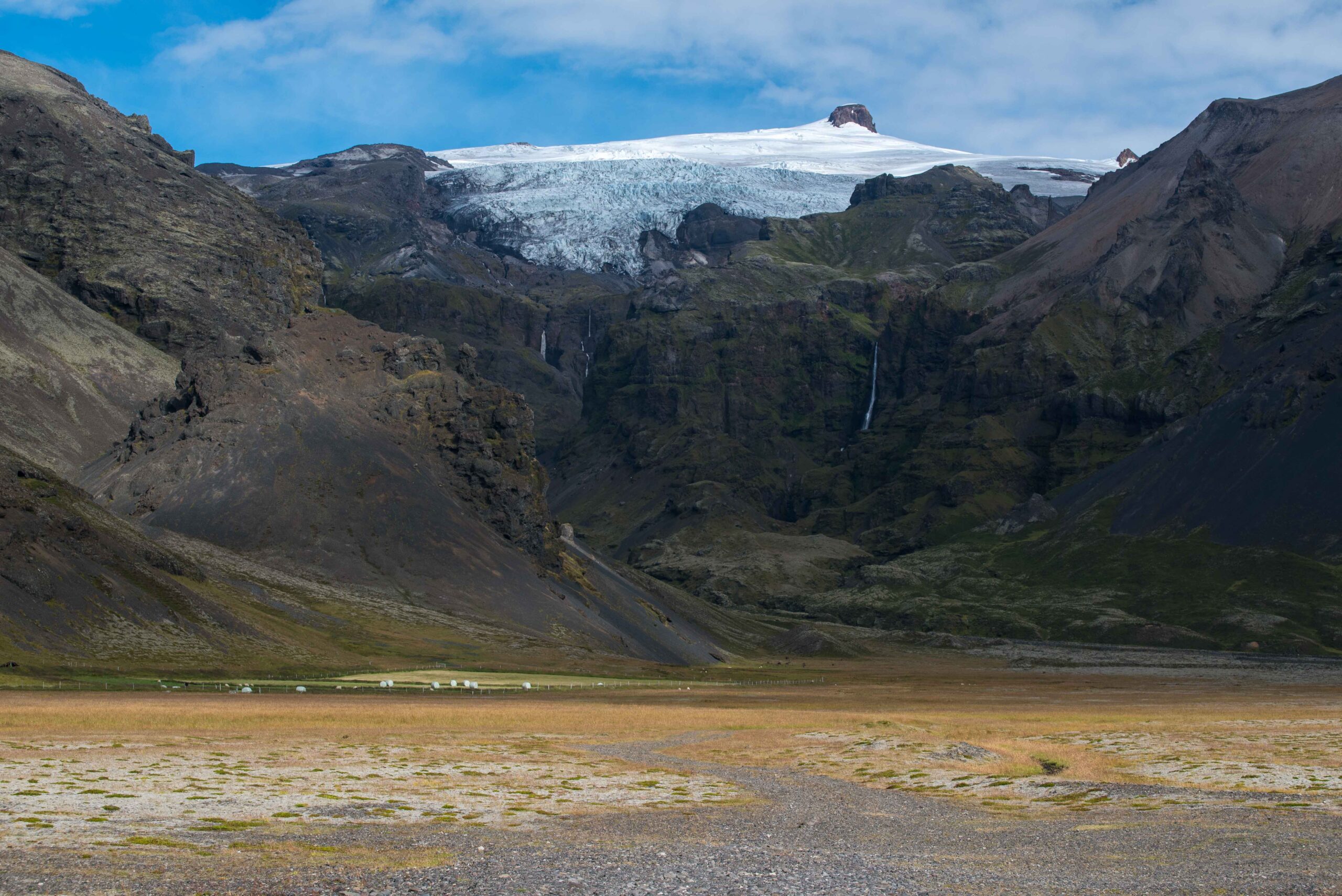

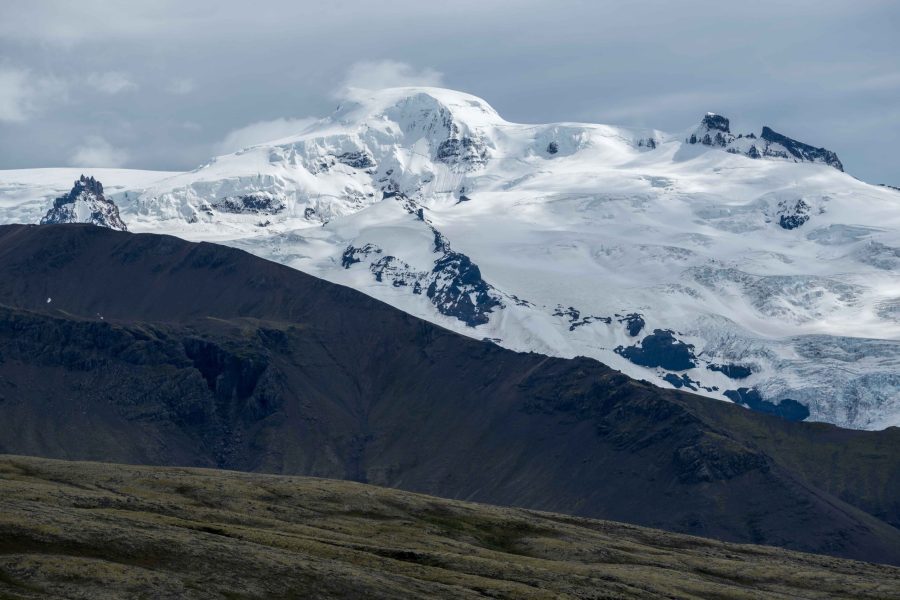
The bigger extent of Stigárjökull was caused by a long period of cool summers. At present, summers are about 2°C warmer, but the area is unabatedly rich in snowfall thanks to air masses being forced up the slopes of the 2000 m high Öræfajökull. From measurements it is known that total annual precipitation at the top of the mountain is 8000 mm, which accounts for 10 to 13 m of (compact) snow each year (Guðmundsson, 2000). The amount of precipitation depends on the wind direction. When air comes in from the relatively warm North-Atlantic weather is wet, while northerly winds bring dry weather, as Vatnajökull keeps snow at bay.
The wind direction is largely dictated by the position of pressure zones in the North-Atlantic, which is called the North Atlantic Oscillation (NAO). If the NAO is positive, areas of low pressure dominate around Iceland. Normally this brings more precipitation than in periods with a negative NAO, when atmospheric pressure is relatively high. You would expect glaciers to feel better when NAO is negative (more snow), but research show it’s actually the other way around (McKinzey et al., 2017). Reason for this apparent contradiction is the fact that glaciers are strongly controlled by summer temperatures, which are cooler when NAO is negative, because winds then blow more often from the north.

Because of global warming, the relationship between NAO and glacier behavior gets blurred. After all, due to high temperatures glaciers nowadays recede regardless of the wind direction. The only exceptions are the glaciers of Öræfajökull. This glaciated volcano received so much snow over the last decade that some of its steep outlet glaciers have started to advance a little bit. Despite warm summers and thanks to high precipitation, both of which are the result of a predominantly positive NAO over the last ten years (NOAA).

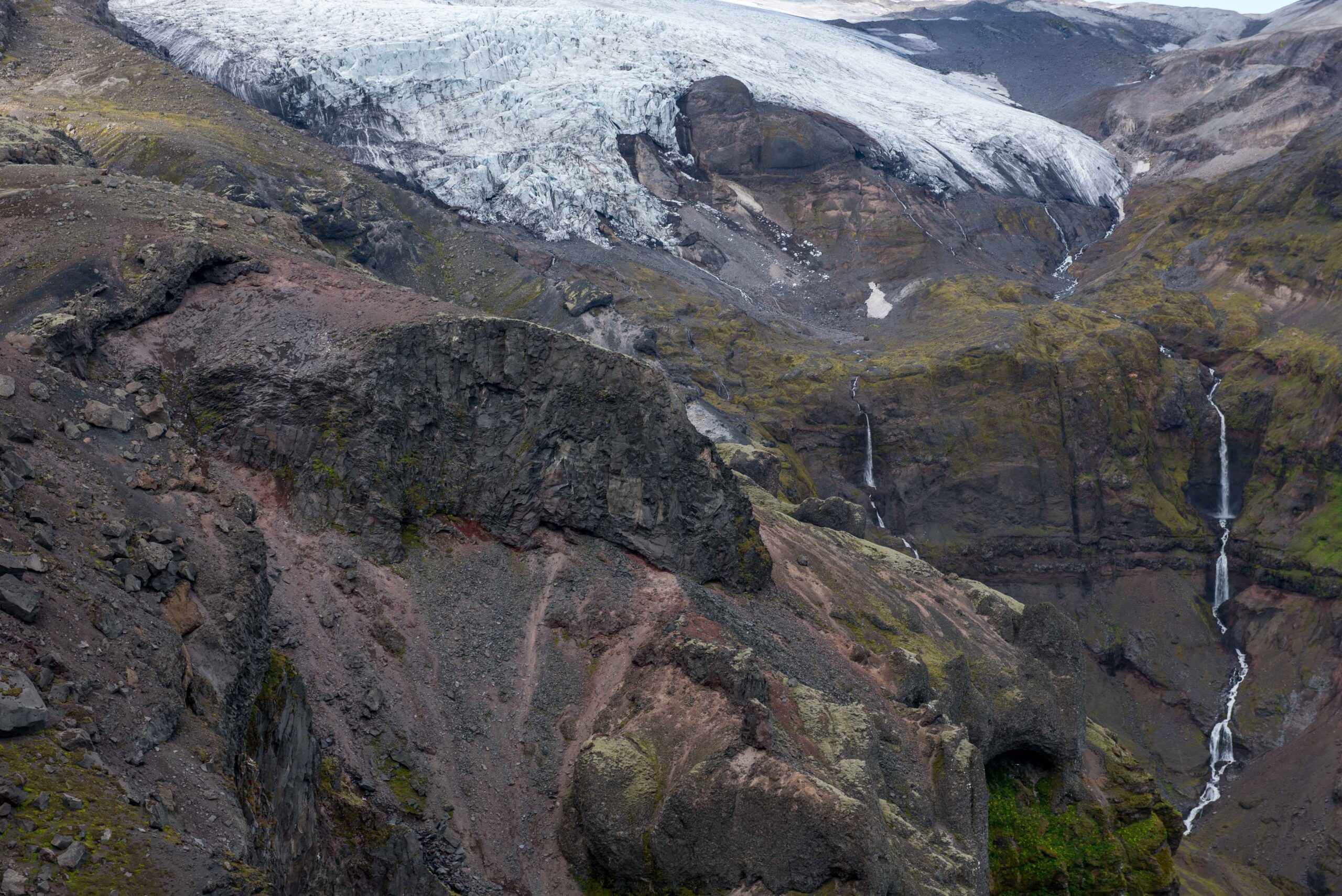
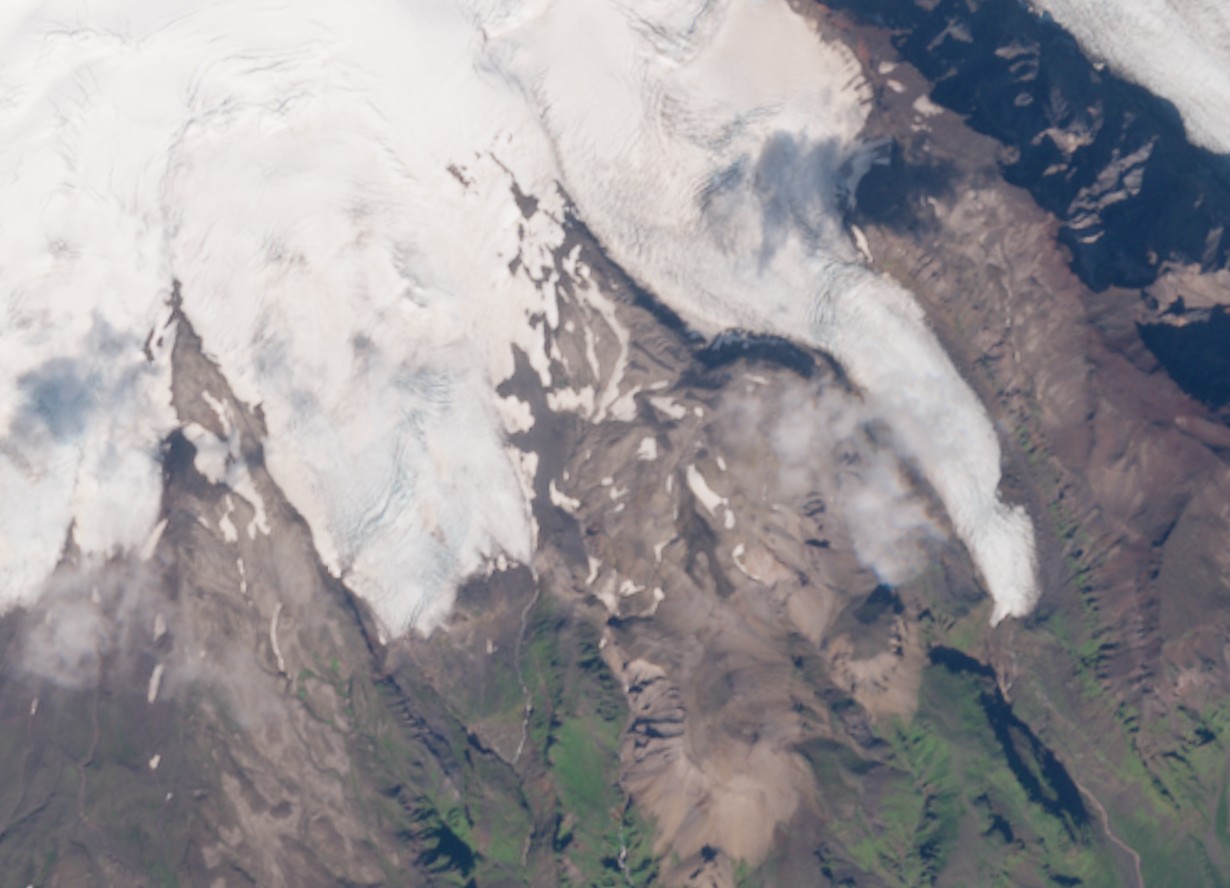
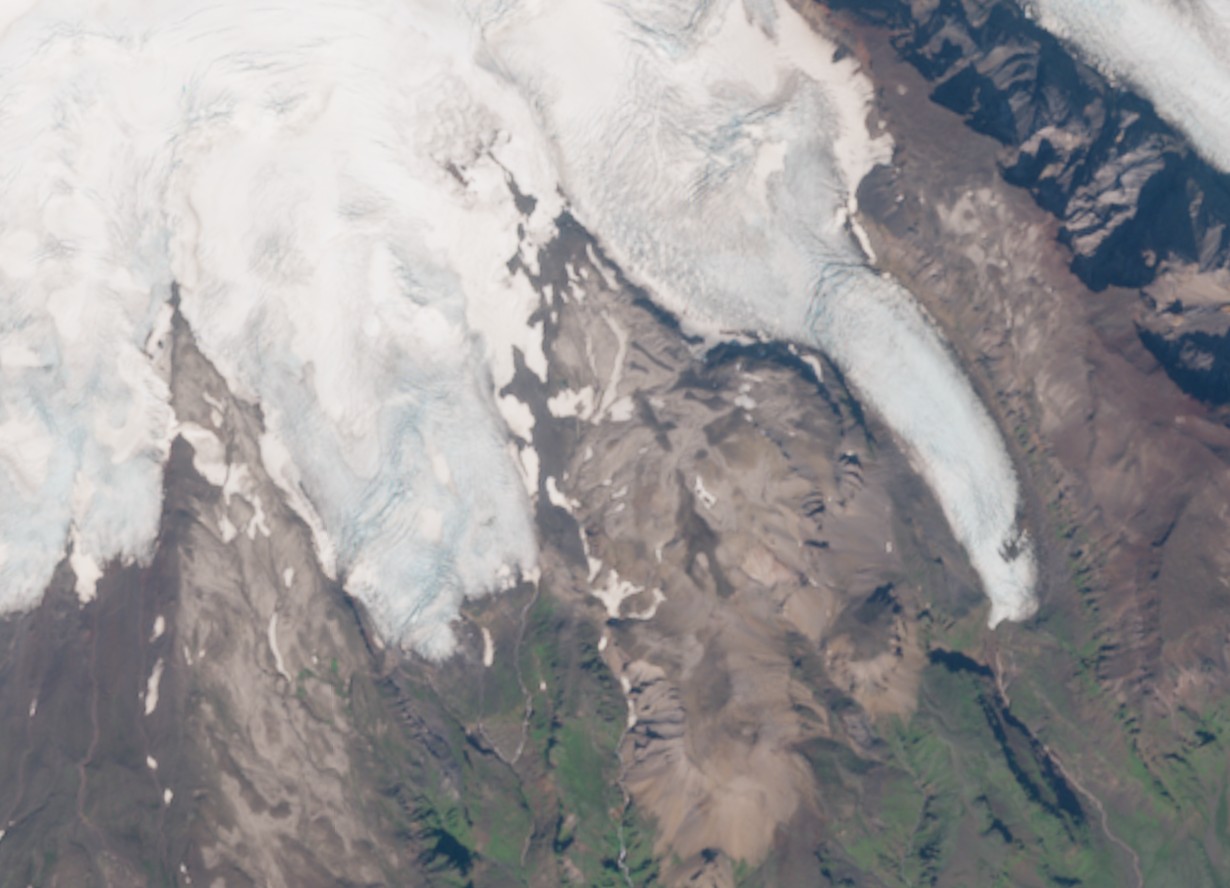
Small advance of Stigárjökull between 2017 (left) and 2020. Source: sentinel-2 via copernicus.eu.
Stigárjökull is one of those advancing glaciers, albeit very modest. And to make things even less impressive, the advance already stopped five years ago. It progressed some two hundred meters in the period 2017-2020, which made the glacier fall over a cliff. Since then the glacier retreated again by a few dozens of meters.
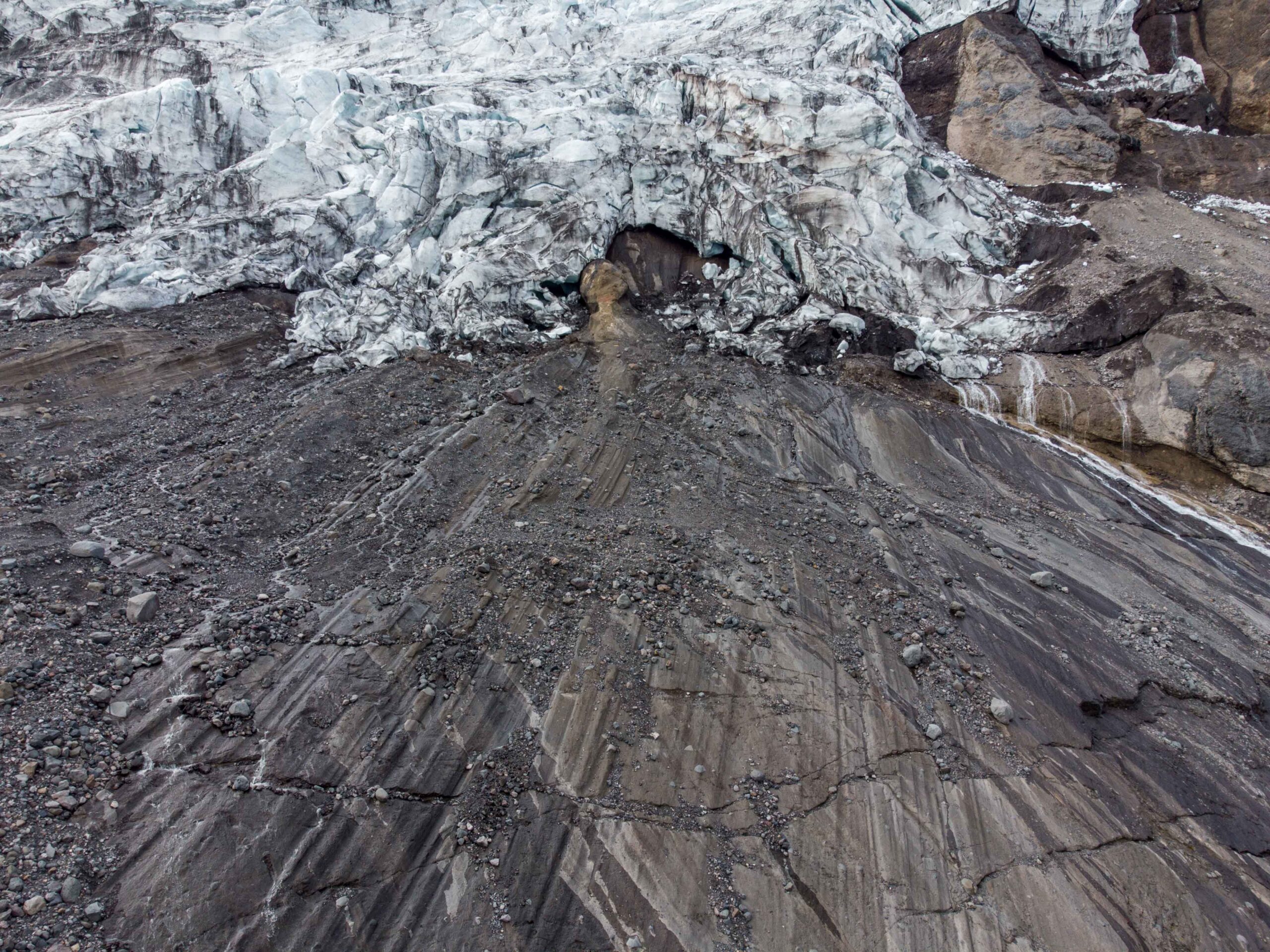
Although Stigárjökull has receded by about 20 m in recent years, the extent it had around 2020 is clearly recognizable as a sharp contrast between bedrock overgrown by mosses and bedrock covered by a new layer of glacial deposits. What both zones have in common are glacial striations. These are scratches in the bedrock formed at a time when Stigárjökull was hundreds of meters thick. Back then boulders at the bottom of the ice scrapes over the rocks under very high pressure, leaving marks in the direction of glacial flow. Without photos or moraines to rely on, these scratches are a welcome reminder of how it once was.
Search within glacierchange: